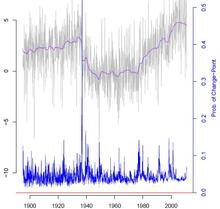ITL Statistical Engineering Division
The Information Technology Laboratory (ITL), Statistical Engineering Division conducts the work of the NIST Greenhouse Gas Measurements Program. Project descriptions and lead researchers are provided.

| Bayesian Gaussian Process Model for Estimating Greenhouse Gas Surface Fluxes – (A. Possolo, ITL) Goal: to formulate a Bayesian Gaussian process model that gives a rigorous, geostatistical approach to estimate the distribution of atmospheric trace gases across a city grid, based on spatial greenhouse gas measurements collected by a surface-based observation network. |

| Surface Temperature Measurement Validated Uncertainties, New Measurement Methods and 3D Microclimate Measurements – (A. Possolo, ITL and G. Strouse, Physical Measurement Lab) The objective is to quantify the measurement uncertainties of historical and current surface air temperature measurement. Understanding surface air temperature measurements relative to the SI is critical in assessing the uncertainty of climate change predictions, spatial distribution, and seasonal dependence. |

| Adaptive Smoothing Methods for Greenhouse Gas Analysis – (D. Samarov, ITL) Goal: to provide interpolated values and estimates of uncertainty for various greenhouse gas emissions measurements from large urban centers and geographical regions. |

| Statistical Methods for Change-Point Detection in Surface Temperature Records – (A. Pintar, ITL) Goal: to identify seasonality and artifacts in temperature records that affect our estimated rate of change. |
| | Advanced Microwave Radiometer Calibration – (J. Splett, ITL) Improve calibration methodologies for microwave radiometers, particularly those employed on small satellites (termed "nanosatellites" or "CubeSats"). |
| | Surrogate Gas Prediction Model as a Proxy for Δ14 C-based measurements of fossil fuel CO2 – (K. Coakley, ITL and C. Miller, NOAA) Goal: to develop a proxy model to predict enhancement of Δ14C in atmospheric CO2 due to fossil fuel emissions (Cff) based on inexpensive measurements of anthropogenic trace gases. If successful, apply to NOAA tower network and aircraft measurements. |
Created March 2, 2015, Updated April 5, 2022

